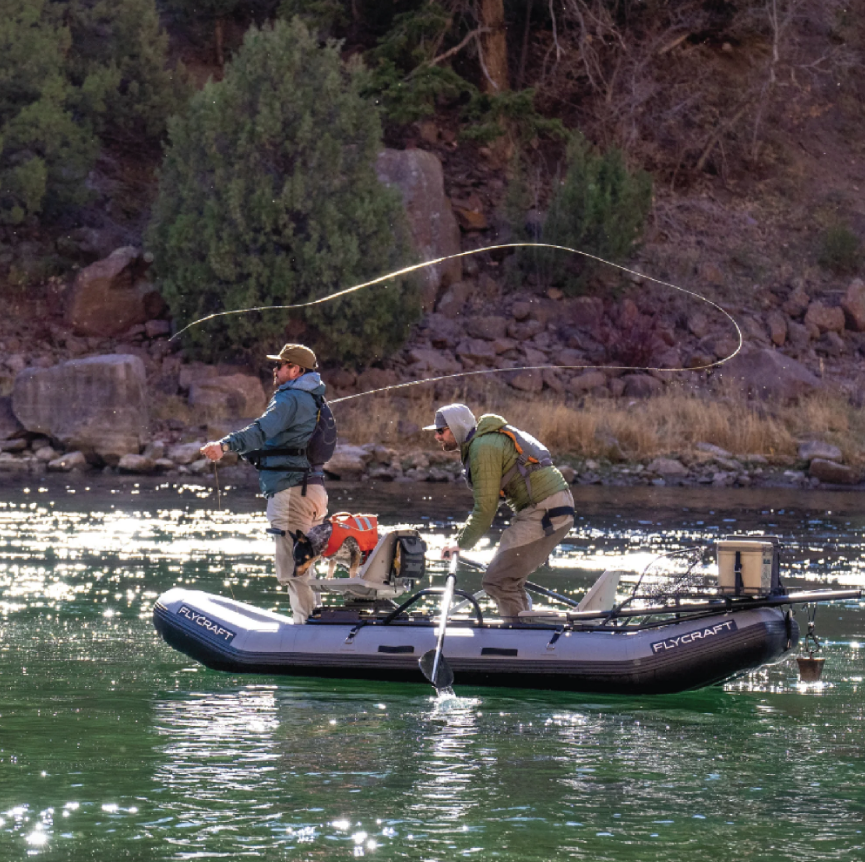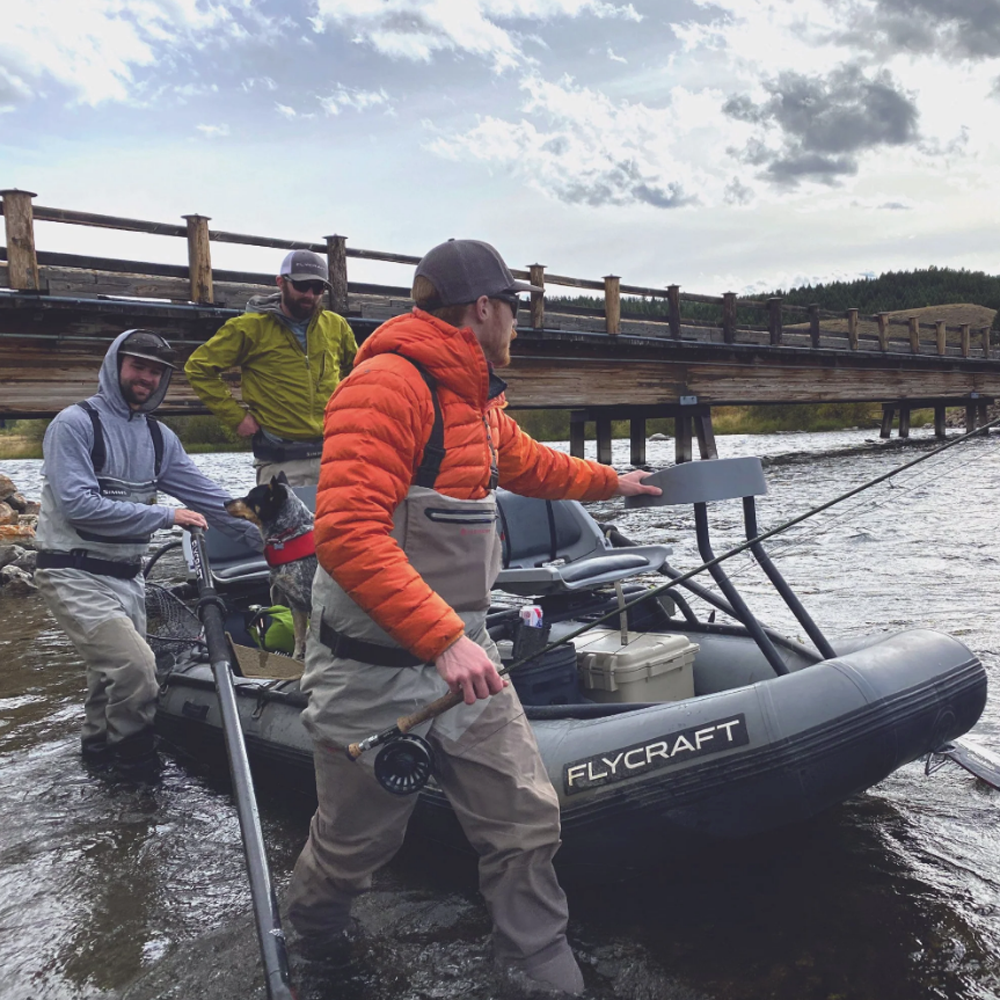
Small Craft Boat – Flycraft Guide-3man. Photo Flycraft. Pricing . . .
Small craft boat: Not pretty, but as a fishing tool, they are hard to beat
Make mine an inflatable
By Skip Clement
The simplest way to access fishing is from a bank, beach, dock, or pier or, as South Florida’s famous Land Captain guide, author, journalist, and former commercial fisherman Steve Kantner says, ‘Walk-in Fishin,’ but optimally accessed by small craft boat.
Optimally accessed by small craft boat
To best inshore waters include famous coordinates, such as the Maritime provinces in Eastern Canada that host ancient native strains of brook trout and Anadromous Atlantic salmon. Argentina has golden dorado, sea-run brown trout, and impressive lakes and riverine rainbow and brown trout. In Alaska, biblical runs of sockeye salmon in the Bristol Bay region, are all most favorably accessed by small craft boat.
You can’t get there without a personal watercraft
Except for mountain streams and offshore bill fishing, an angler with a small craft, from kayak or canoe to a skiff of any build and powering improves one’s reach and, ultimately, their catch stats anywhere from much more to a multiplier of that.
All fishing ‘boats‘ dedicated to transporting a sport fisher, have the same function: access places safely that could not be gotten to before having it.

Northern pike [top], bonefish, rainbow trout. With an inflatable a DIY in Minnesota for pike, bonefish in Florida Keys, and a rainbow trout in Pennsylvania – just imagine. Illustrations by Thom Glace. Vist this award winning watercolorist, angler, and conservationist here . . .

Study by award winning watercolorist Thom Glace.
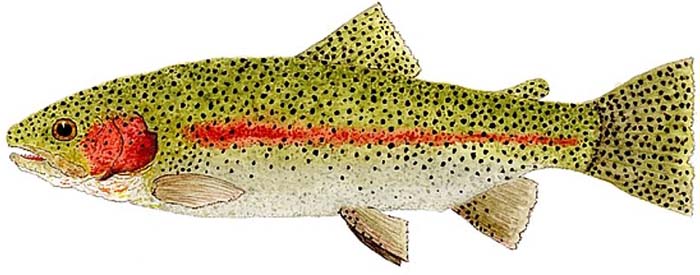
Rainbow trout paint
Matchless
For example, the Bahamas, Gulf, and Texas coasts, Belize, and the Florida Keys skiffs range from used Jon boats for a few hundred dollars to a 24-carat George Sawley-Chittum flats boat for upwards of $60,000. At the same time, these conveyances have degrees of safety, comfort, speed, and, most importantly, performance levels in favor of improved angler success. None of the world-class skiffs lend to the idea of floating small streams, rivers with runs of shallows, fishing rapids dotted waters, small ponds, and lakes. These waters are made accessible by canoes and kayaks being pick up and SUVs transported.
Small craft boat benefits
There are many reasons to like skiffs, kayaks, canoes, and the myriad of other uniquely engineered concoctions that deliver us to and from the captivity of a couch, river bank, shoreline, dock, or pier. None, though, can meet ‘hosting’ like an inflatable, which can perform like a skiff but can pack away smaller than when fished, not big bucks, plenty durable, and with only minor maintenance a burden.
Old school?
Inflatables, as most know, have been with us for decades, and have seen extensive service as yacht tenders and are required equipment for water-ditching protection onboard commercial airliners, military aircraft, naval ships, and cruise ships. They have also been the conveyance of choice for ‘rapid’ river outfitters for more years than I can remember.
Like many other products, NASA pressured tested fabrics to meet new and more demanding performance standards. The outcomes of those demands has been world leadership in technologies and a national bounty of new products.
For inflatables, fabric tear and puncture strength, abrasion resistance, waterproof characteristics, adhesive options, long-term wear, and stitchability are some of the performance considerations. Today, fabrics used in the design and build of inflatables are almost indestructible, a far cry from the raft fabric that Louis Zamperini and his two fellow B-24 aviators survived in during the campaign in the Pacific against the Japanese in WWII (Unbroken by Laura Hillenbrand).
Today, inflatables used for personal fishing conveyances are almost all made with the design signature of conventional drift boats. Again, only a few inflatables have distinct built-in design features that make them great fly fishing vessels, like only weighing around 100 pounds, providing portability in or atop almost any pick-up truck or SUV without needing costly rigging equipment or a crew.
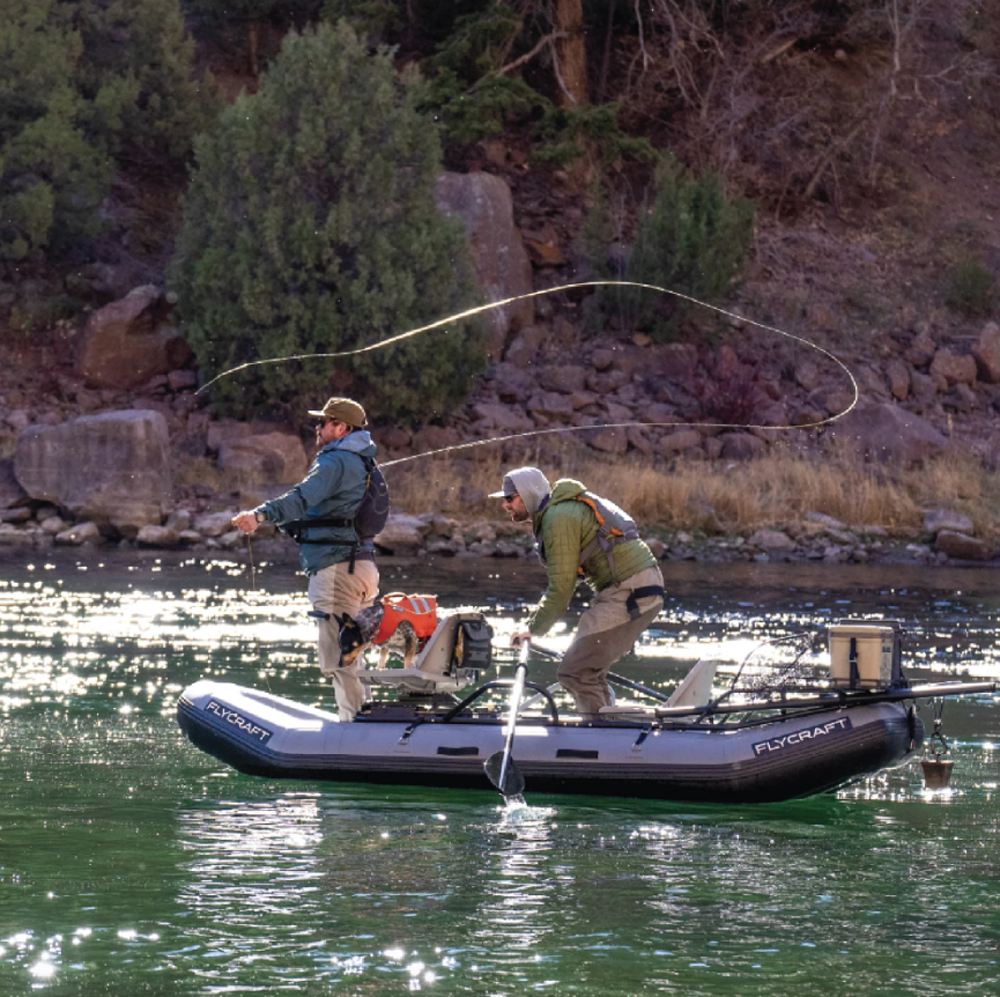
Two man.
In addition, they are deflatable for garage or trunk storage—a huge advantage for metropolis-ites and apartment dwellers. However, deflating and drying before putting away is a pain in the arse. The inflatable reviewed here has a hardened aluminum tube framing added for stiffness while seated, rowing, or standing. Too, high-view observation while underway equals or outshines most self-propelled watercraft. The stand-up feature makes its case for being highly preferable versus canoes and sit-in kayaks.
The old triple threat: oar, paddle, gas motor, or battery-powered
The triple threat options of being propelled by an oar, canoe paddle, small gas, or battery-powered engine give inflatables another edge. For example, you can leisurely drift down river and stop to fish inaccessible pockets denied skiff entry, cruise a lake’s perimeter and anchor to fish small feeder streams, and fish the water depths allowed by tidally governed flats or marshes – all with the knowledge that you can power back up river, cross a lake or beat a tide.
One of the best benefits of the inflatable we profiled is the ease of getting into and out of, portability to, from, and out of the water, and gear stowage.
Inflatable small craft boat cons?
- Are they puncture “proof?” No, but it is relatively rare that there would be a puncture … let alone devalue a trip. Why? Because they both have easy-to-use puncture kits (if you had a bike as a kid, you already know how to use that kit). And lastly, the reviewed inflatable has multiple chambers – one puncture deflates only one cell – you’re still afloat.
- Never raft fast-moving water with a hard bottom inflatable. Think flip or tear, or both.
- The wind is the natural enemy of an inflatable, so you do not want to be caught in open water when an afternoon storm pops up; that’s not open water like ‘the ocean’ – think big rivers, especially lakes, and even shallow water impoundments.
- Inflatables all “push” bow water, making paddling or rowing labor intense – especially not fun on lakes with wind against – get soaked.
- Hot summer storm winds racing over warm water in a shallow lake, can create significant time wave action and shore pileups of water on the lead side of the wind. In what sometimes seems just minutes, a beach can disappear.
Other cons
- Open water wave sequencing in shallow lakes, the time between waves is about 1/3 that compared to ocean waves. And, yes, that is a big deal.
- Many’ class rated’ rivers are relatively safe to navigate with the fishing raft profiled, but if it is a “tailwater” river, it is subject to dam releases by the Corps of Engineers -Uh-oh. Pay attention.
- Drownings are not rare during releases due to a lack of understanding of water release impact or underrating the threat. The “how much water” is released can also be significant. For example, a few inches removed is not the same as a multi-foot level release – going from just noticeable to capsizing your vessel.
- Avoid white water rapids. When a Class II turns into a Class IV, you’re in deep do-do.
- The fabrics of most inflatables are negatively impacted if put in freezing water, especially if the fabric is not already cold when placed in sub-freezing water. Avoid this scenario – protect your investment.
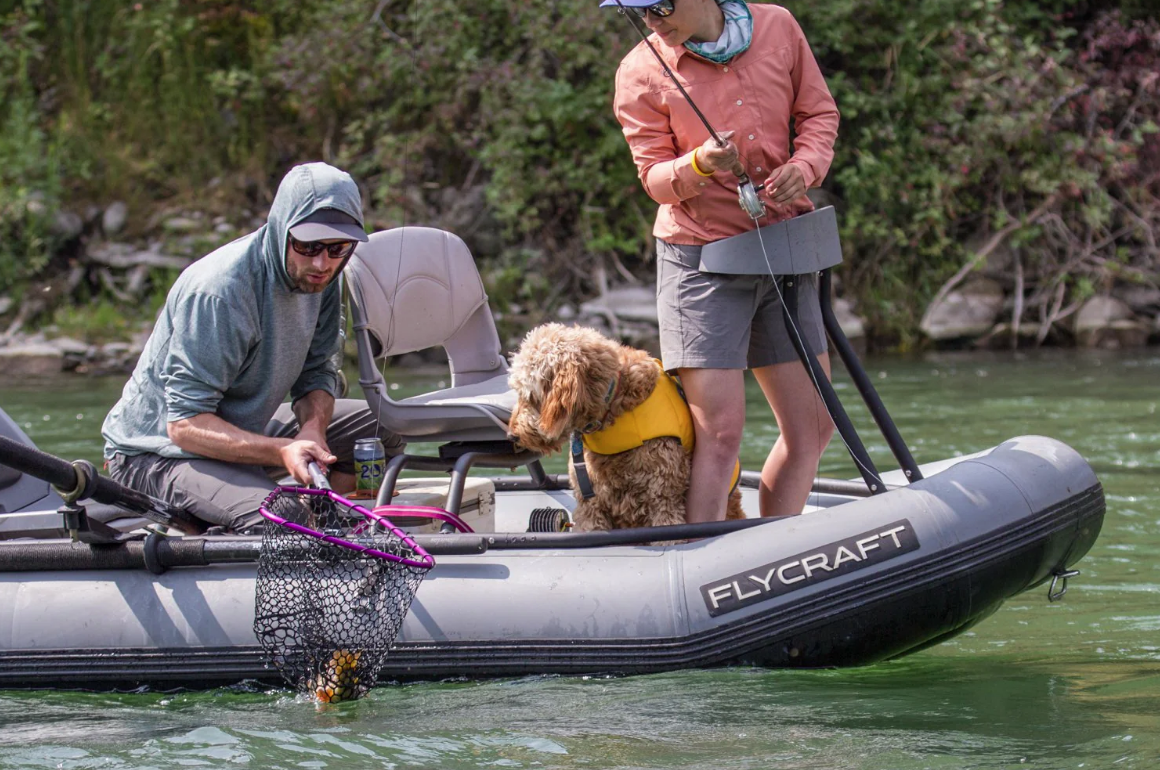
Does the poodle fish? Photo credit FlyCraft brochure.
What to consider when buying an inflatable for your portable version of a small craft fishing boat
No, on the big box, discount store inflatables. A $200 inflatable listed as serviceable for two–three anglers will be nothing more than a loss, dangerous, and a short-lived product at best. Stick with made for the use you intend to use it for, like the profiled or like product. It took years to perfect; the owners invested in design and engineering, and their inflatables passed safety tests and a long list of specs.
Hard bottom inflatables have only one use: a pond or a lake. In a river with variable flows, a hard bottom could easily hang up on a boulder or stump and, in seconds, flip over or suffer a puncture. A soft base will undulate over obstructions – go with the flow.
Be a captain
Last, you are not being nice by adding too many people on board. It is dangerous to overload these vessels.


